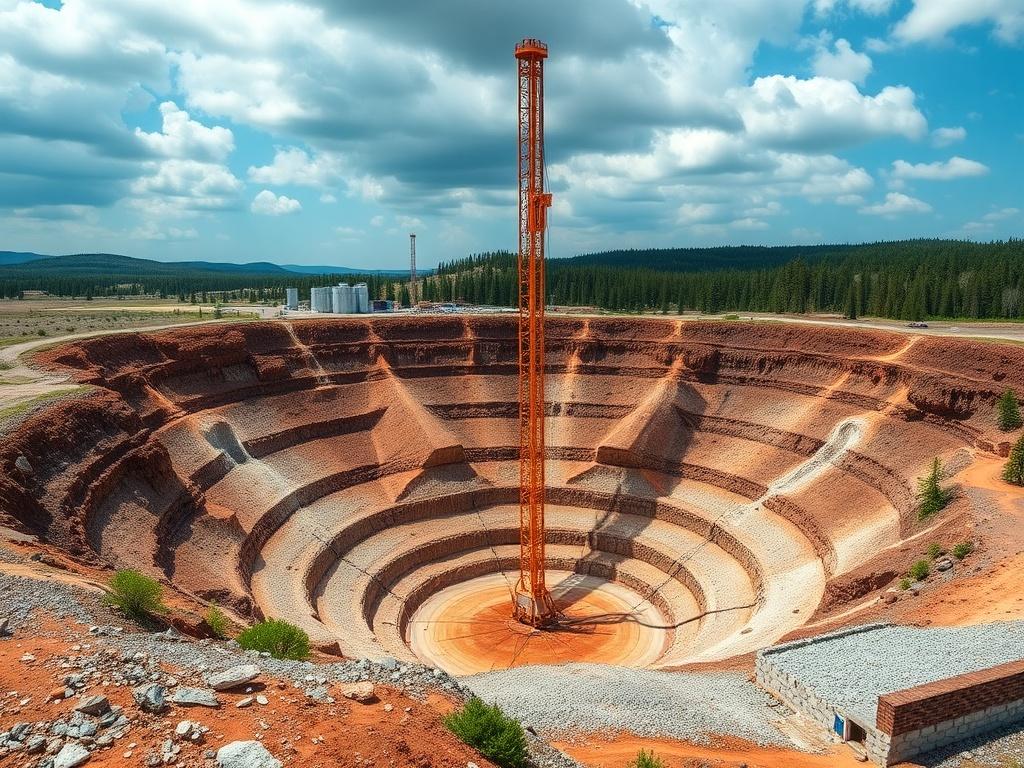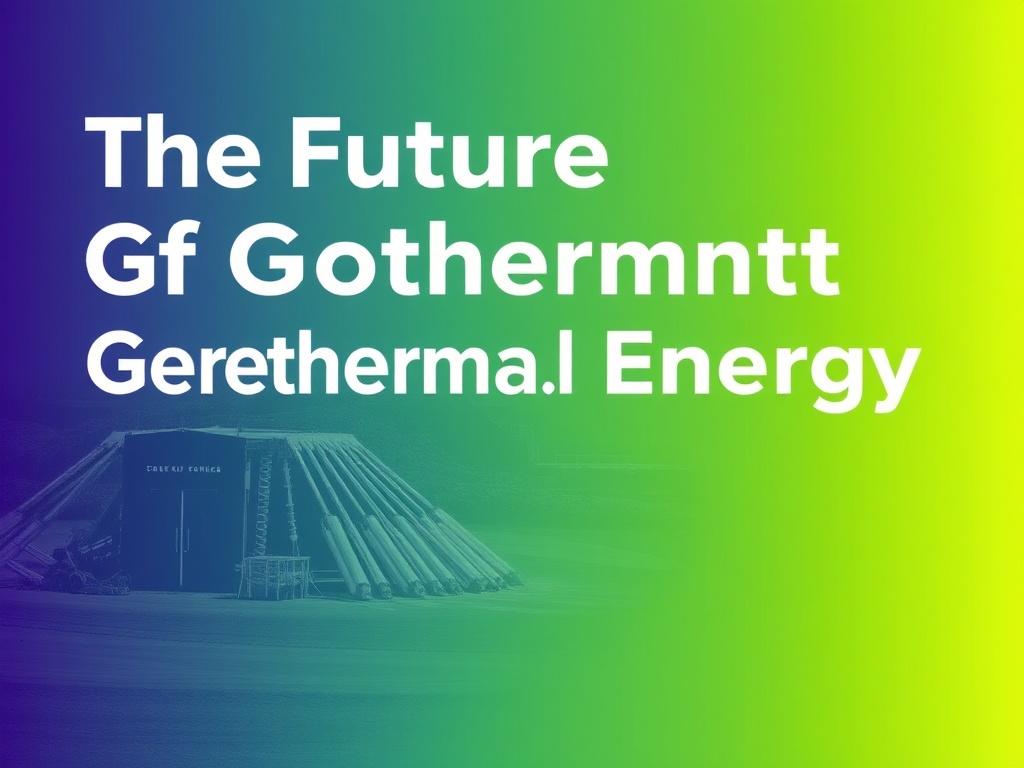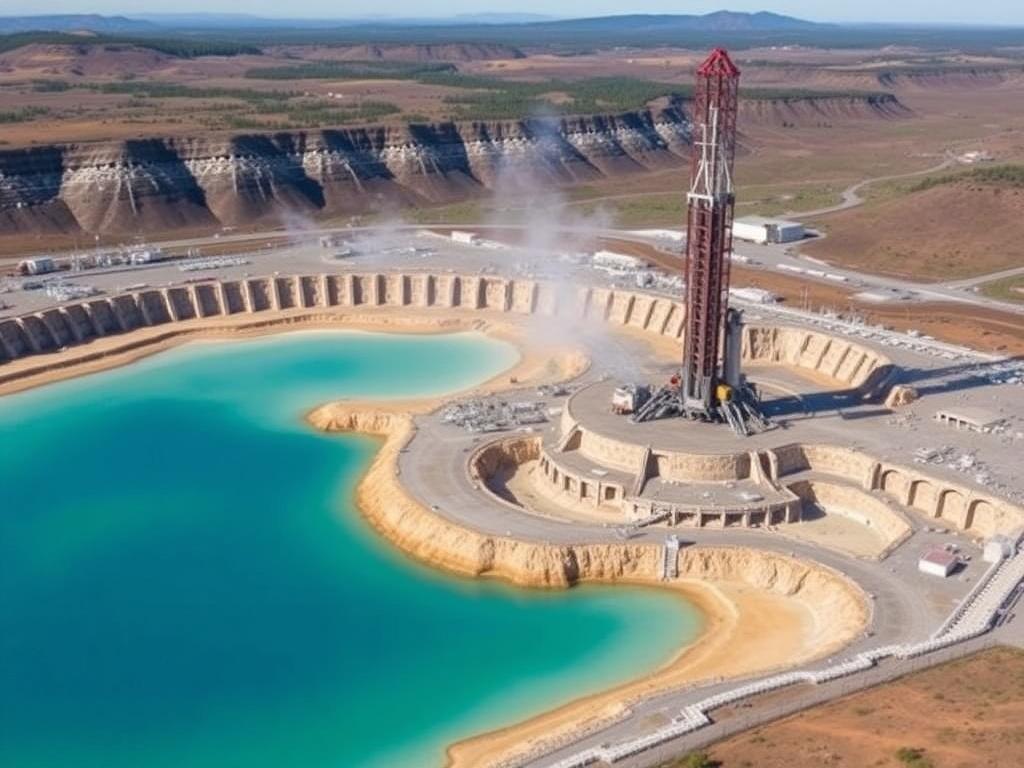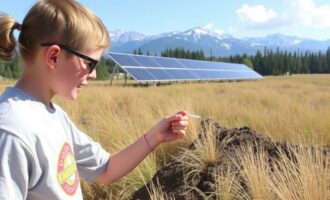- What Is Geothermal Energy and Why Does It Matter?
- Conventional vs. Enhanced Geothermal Systems
- The Role of Deep Drilling Projects in Geothermal Energy
- Deep Drilling Technologies to Watch
- Benefits of Deep Drilling Projects for Geothermal Energy
- Geothermal Energy vs. Other Renewable Sources
- Challenges and Risks in Deep Geothermal Drilling Projects
- Summary of Deep Drilling Challenges
- Successful Deep Drilling Projects Around the World
- The Future Outlook: Innovations and Opportunities
- Key Takeaways About Deep Drilling and Geothermal Energy
- Conclusion
Imagine tapping into a vast, clean, and reliable source of energy hidden deep beneath the Earth’s surface. That’s exactly what geothermal energy promises, and with the advancement of deep drilling projects, this ancient natural resource is becoming an exciting solution for our future energy needs. Geothermal energy, derived from the heat stored in the Earth’s crust, offers a sustainable alternative to fossil fuels, with a significantly lower environmental footprint. As the world faces the dual challenges of climate change and increasing energy demands, deep drilling projects in geothermal energy are gaining momentum, bringing new opportunities and innovations to the forefront.
Deep drilling projects enable us to reach reservoirs of geothermal heat that were previously inaccessible with conventional technology. This breakthrough means we can now consider tapping into geothermal resources not just in volcanic regions but across much broader areas. The potential impact is profound: clean energy that operates 24/7, unlike solar or wind, is more reliable and can significantly reduce greenhouse gas emissions. In this article, we’ll explore the future of geothermal energy through the lens of deep drilling projects, highlighting the technology, benefits, challenges, and promising developments shaping this industry.
What Is Geothermal Energy and Why Does It Matter?

Geothermal energy is the heat generated and stored beneath the Earth’s surface, which can be harnessed for heating, cooling, and electricity production. This heat comes from the natural decay of radioactive materials in the Earth’s core and mantle combined with residual heat from the planet’s formation. The Earth’s interior temperature can reach thousands of degrees Celsius, but we access it at much shallower depths where heat can be converted into useful energy.
Unlike intermittent energy sources like solar and wind, geothermal is a dependable base-load energy source, capable of running continuously with a small footprint. This reliability is crucial as more countries strive to meet climate goals and transition to clean energy. Additionally, geothermal systems produce minimal emissions and consume very little land compared to large-scale solar or wind farms, making it a highly sustainable option.
Conventional vs. Enhanced Geothermal Systems
Today, most geothermal energy facilities rely on conventional geothermal systems, where naturally occurring hot water or steam reservoirs near the Earth’s surface are tapped. These conventional systems are mostly located in volcanic or tectonically active regions such as Iceland, the Philippines, and parts of the United States (notably California). However, the geographic restriction limits the widespread adoption of geothermal energy.
Here is where deep drilling projects and enhanced geothermal systems (EGS) enter the picture. Enhanced Geothermal Systems involve drilling deep into hot dry rock formations and creating artificial reservoirs by injecting water to extract heat. This approach potentially expands geothermal energy access worldwide, far beyond the traditional hot spot regions, by enabling geothermal power production in areas with no natural hydrothermal activity.
| Type of Geothermal System | Depth Range | Location Suitability | Main Advantage | Current Limitation |
|---|---|---|---|---|
| Conventional Hydrothermal | Up to 3 km | Volcanic/Tectonic Regions | Proven technology, efficient energy extraction | Limited to specific regions |
| Enhanced Geothermal Systems (EGS) | Between 4 and 10 km or more | Broad geographic distribution | Access to vast underground heat sources | High drilling costs, technology still developing |
The Role of Deep Drilling Projects in Geothermal Energy
Deep drilling is a transformative technology that forms the backbone of the future of geothermal energy. Traditionally, drilling for geothermal reservoirs has been limited to relatively shallow depths. However, deep drilling projects aim to reach much greater depths, unlocking heat sources previously beyond reach. These projects involve drilling several kilometers into the Earth’s crust, such as 5 to 10 kilometers or more, where temperatures are hot enough for energy generation even without natural water reservoirs.
One of the main challenges deep drilling projects face is the cost. Deep drilling is expensive due to the technical complexities and the need for specialized equipment capable of withstanding high temperatures and pressures. However, advancements in drilling technology, many borrowed from the oil and gas industry, are gradually reducing costs and increasing efficiency. Innovations like advanced drill bits, better materials, and real-time monitoring have made deep geothermal wells more feasible.
Efforts to increase borehole stability, optimize drilling speed, and minimize environmental impacts are all essential components of these projects. Moreover, some companies and research institutions are experimenting with novel approaches like laser drilling, plasma drilling, or using robots to improve deep geothermal drilling efficiency in the near future.
Deep Drilling Technologies to Watch
- High-Temperature Resistant Drill Bits: These drill bits are designed to operate effectively under extreme heat conditions, allowing deeper penetration into hot rock formations.
- Real-Time Drilling Monitoring: Sensors and AI systems that track drilling parameters and predict performance issues help reduce downtime and damage.
- Directional and Horizontal Drilling: Techniques that improve access to heat formations and optimize reservoir production rates.
- Advanced Robotics: Robots capable of performing inspections and maintenance in deep wells reduce human risk and operational costs.
- Innovative Borehole Cooling Methods: To protect drilling equipment from high temperatures and extend operational life.
Benefits of Deep Drilling Projects for Geothermal Energy

Deep drilling projects promise to radically transform the geothermal energy landscape, bringing benefits that extend beyond simply more power generation.
1. Expanding Accessible Geothermal Resources: By overcoming the depth and heat limits of traditional wells, deep drilling opens the door to abundant geothermal energy sources worldwide, including under less geologically active regions.
2. Increasing Energy Security and Reliability: Geothermal power plants operate 24/7, providing a stable and dependable energy supply, unlike variable renewable sources such as wind or solar. Deep geothermal wells can support larger power plants with greater output.
3. Reducing Carbon Emissions: Because geothermal energy is inherently clean, expanding its use through deep drilling projects can significantly reduce reliance on coal and natural gas, curbing harmful greenhouse gas emissions.
4. Economic Growth and Job Creation: Deep drilling projects involve complex engineering and construction efforts, spurring job creation in technology development, manufacturing, and operations in local communities.
5. Providing Heat for Multiple Uses: Beyond electricity, deep geothermal energy can supply heat for district heating, agriculture (like greenhouses), and industrial processes, increasing energy efficiency overall.
Geothermal Energy vs. Other Renewable Sources
| Energy Source | Availability | Intermittency | Land Use | Carbon Footprint |
|---|---|---|---|---|
| Geothermal (Deep Drilling) | Continuous (24/7) | None | Low | Very Low |
| Solar | Daytime only | High (clouds, night) | High | Low |
| Wind | Weather dependent | Medium | High | Low |
Challenges and Risks in Deep Geothermal Drilling Projects
Despite its enormous promise, deep drilling for geothermal energy is not without challenges. One of the biggest hurdles remains the upfront cost, which can be prohibitive without government incentives, private investment, or long-term power purchase agreements. The drilling phase is risky due to potential equipment failure in tough underground conditions, unexpected geological formations, or loss of well integrity.
Induced seismicity, or human-caused minor earthquakes, is another concern linked to enhanced geothermal systems where water injection alters subsurface pressures. Though these micro-earthquakes are generally harmless, they have caused public concern and regulatory scrutiny in some projects. Developing careful risk management strategies and transparent community engagement is critical for gaining social license to operate.
Furthermore, not all underground heat sources are accessible economically or environmentally. Engineers must carefully survey and model subsurface conditions before drilling to maximize success rates. The life span of geothermal wells is limited as reservoirs cool over time, so sustainability practices like reservoir recharge and heat management must be employed.
Summary of Deep Drilling Challenges
- High Upfront Capital Costs
- Technical Difficulties with Equipment Durability
- Induced Seismicity and Environmental Concerns
- Geological Uncertainty Increasing Drilling Risks
- Well Longevity and Reservoir Management
Successful Deep Drilling Projects Around the World
Several pioneering deep drilling projects have demonstrated the feasibility and potential of enhanced geothermal energy, putting it on the map as a viable global solution.
- The United States – The Desert Peak EGS Project: Located in Nevada, this project is one of the USA’s most advanced enhanced geothermal demonstrations, drilling over 3 kilometers deep to tap into hot dry rock formations. It combines innovative reservoir stimulation with deep drilling techniques to optimize heat extraction.
- Germany’s Deep Geothermal Drilling in Bavaria: Germany is drilling wells over 4 kilometers deep as part of efforts to create a sustainable geothermal district heating system, reducing reliance on natural gas and coal.
- Japan – Osaki Cool Gen Project: Faced with scarce natural hydrothermal resources, Japan is investing heavily in deep drilling to diversify its energy mix by exploiting hot dry rock.
- Iceland’s Reykjanes Deep Drilling Project: Known for its conventional geothermal prowess, Iceland is pushing boundaries with deeper wells to increase output and explore enhanced geothermal techniques beneath its volcanic terrain.
The Future Outlook: Innovations and Opportunities

Looking ahead, the future of geothermal energy is intimately tied to advances in deep drilling technology and project execution. The integration of artificial intelligence, machine learning, and big data analytics will optimize drilling operations, predict reservoir behavior, and reduce costs. New materials and cooling technologies will push drilling depths further, enabling access to supercritical geothermal fluids, a new high-energy resource.
Additionally, hybrid solutions that combine geothermal with other renewable technologies can balance grid demands and improve resilience. For example, geothermal plants could provide consistent base-load power while solar or wind meet peak demand. Investments in pilot projects and government support can accelerate commercialization and adoption worldwide.
Geothermal energy also offers exciting possibilities for developing regions lacking reliable electricity access. With scalable, modular deep drilling systems, geothermal could provide off-grid energy solutions, fostering economic development and energy equity. As the climate crisis heightens urgency, geothermal energy backed by deep drilling projects emerges as a vital player in the global transition to clean energy.
Key Takeaways About Deep Drilling and Geothermal Energy
| Aspect | Insight |
|---|---|
| Geothermal Energy | A reliable, 24/7 renewable energy source with low emission impacts |
| Deep Drilling Projects | Enables accessing vast deep geothermal heat reservoirs beyond conventional limits |
| Enhanced Geothermal Systems (EGS) | Artificial creation of geothermal reservoirs in dry rock via deep drilling |
| Challenges | High costs, technical drilling obstacles, environmental and seismic risks |
| Future Opportunities | Technological innovation, hybrid energy systems, energy equity, global scalability |
Conclusion
The future of geothermal energy is bright, fueled by groundbreaking deep drilling projects that promise to unlock an abundant and sustainable source of power hidden far beneath the Earth’s surface. As technological advances reduce costs and improve efficiency, deep drilling expands geothermal energy from niche volcanic regions into a global solution. The ability to provide continuous, reliable, and clean energy positions geothermal as an essential contributor to the transition away from fossil fuels. While challenges remain — including economic, technical, and environmental hurdles — the continued commitment of researchers, industry leaders, and policymakers will be crucial. By embracing innovation and collaboration, deep drilling projects in geothermal energy can play a transformative role in meeting the world’s energy needs sustainably and equitably for decades to come.
Как вам статья?







